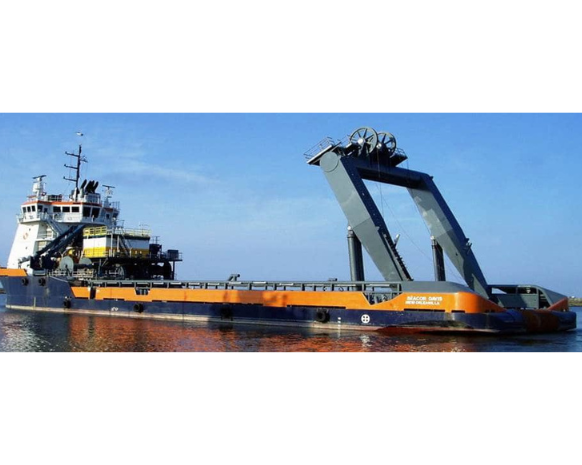SPECIFICATIONS
- Stern Mounted Portable A-Frame – Safe Working Load: 60 mT
- All parts designed to fit into 40 foot containers for shipping purposes
- Portable unit (able to be dismantled and reassembled on another vessel)
- Two A-Frame foundations (for bolting to deck) with hydraulic cylinders
- All AH36 carbon steel structure
- Custom designed box beam cross sections
- Flanged units for bolted connections between legs and cross member
- Four 10,000 lbs tugger winches, to be mounted on legs and on foundation, to keep package steady
- Standalone HPU & control system – housed in portable 8×20 ft. container
- Local and remote operation – Belly pack operator control box with wire pendent
- ABS Guide for Certification of Lifting Appliances
PROJECT DETAILS
In a fast-paced world, you need continual improvement. In one project, the client needed an A-frame to launch a large 60 mT package off the stern of the ship and deploy it into the water. The width of the structure spanned the breadth of the stern deck and the clear height was even with the O2 deck overhead. The location and portable nature of the A-Frame meant that it was required to operate under a 2:1 vertical dynamic forces. This meant a significant increase in the supporting structure, over and above a more permanent option.
The kicker for this project was that the vessel was already operating in a remote country. And, this is where installation and testing would occur. The client turned to SIT to complete the work, knowing they could count on the company to get it right the first time.
Shipping the A-frame would entail addressing some unique challenges. Each modular component of the A-frame would have to fit in 40-foot containers for overseas shipment. To ensure fabrication tolerances were correct and to support line boring, the system was assembled in the factory and SIT engineers carried out a fit checks along with rigorous factory acceptance evaluations. Once completed, SIT traveled overseas to supervise installation and confirm assembly, integration, and ABS testing were successful.
In the end, the client couldn’t have been more pleased with the final product. From a service standpoint, SIT’s integrations paid off in spades, since the client had fewer contracts to manage, less vendors to worry about, and less engineering and/or project management expertise required on their end.

